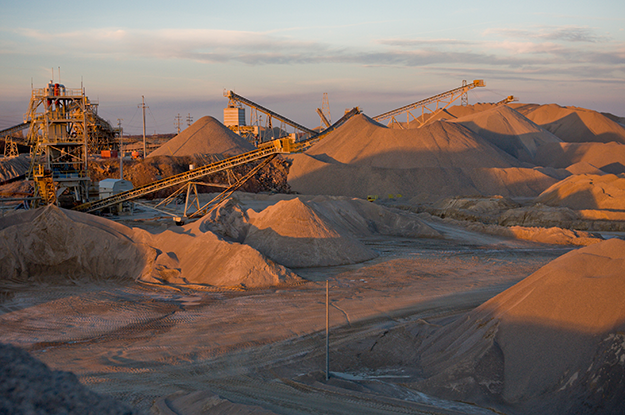Think we're no longer in the Stone Age? Think again! The minerals baby at the Minerals Education Coalition website shows how many million pounds of stone, sand, and gravel will be needed by each person born in the United States over the course of their lifetime. How can that be?
Aggregates in Oklahoma
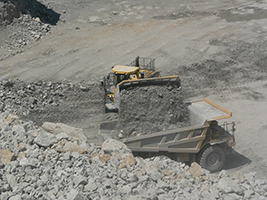
Figure 1. Blasted rock.
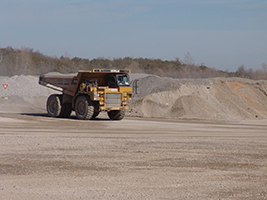
Figure 2. Mine haul truck.
Aggregates, generally speaking, are inert and hard, fragmental material usually bound together by some type of cementing agent, to make concrete, mortar, or plaster. Just think of all the concrete roads that we travel on every day. For example, it takes an average 152,000 tons of aggregate to pave one mile of 4-lane interstate highway in the United States. Portland cement concrete uses 80% aggregates by volume; asphalt roads contain 94% of their volume in aggregates. Now think about aggregates used in airport, railway, and bridge and tunnel construction. That’s a lot of stone!
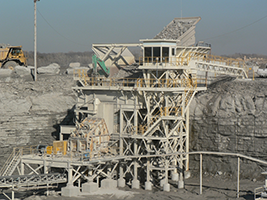
Figure 3. Primary crusher.
The home you live in takes 400 tons of aggregates on average to build. Aggregates are in the concrete foundation and driveway, and even in the shingles on your roof. Where else might you find quarried rock in your home? Well think about your home's wallboard construction, the tiles in the shower stall and around your kitchen sink, and the glass in the windows. These are just a few things that come to mind.
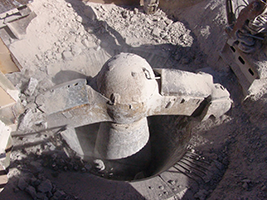
Figure 4. Gyratory crusher.
Stone, sand, and gravel are also used to make some of the household products we use every day: cleansers have pulverized stone for its abrasive effect; cosmetics contain many rock products (mica in makeup foundations, for example, imparts that shimmering look); toothpaste has many mined natural stone ingredients (fluoride comes from the mineral fluorite, to mention just one); and even chewing gum and staple food items such as bread contain stone products (limestone and gypsum, respectively). Check out the ingredients listed on these products’ packaging and you can prove it yourself.
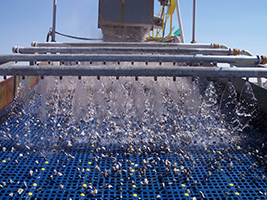
Figure 5. Rock washer.
Are aggregates valuable? Well, the rocks mined and crushed in Oklahoma for use as aggregate alone amount to about half the mineral value of all nonfuel rock products mined in the State—about $350 million, which is almost 4 times more than any other rock product.
